The most beautiful little roses
The category of low-growing border roses includes varieties that can be used to create voluminous, abundantly flowering hedges and borders. Graceful, miniature roses will fit perfectly into the landscape design of even a small garden plot.Gardeners and landscape designers love low-growing varieties of roses for their ability to combine them with other ornamental crops, including other roses. A description of the best miniature, border varieties of roses with photos and names will help you choose low-growing varieties suitable for growing in gardens and summer cottages.
| Content: Names of varieties of miniature roses
|
|
Border roses are considered unpretentious crops to grow. They take root well after transplantation and can withstand low temperatures. |
Description and characteristics of border roses
Cordula
|
The photo shows a border rose Cordula. Flowering lasts throughout the summer. The variety is easy to care for and easily propagated by cuttings. |
Large clusters of double bright red flowers bloom from ball buds and are fragrant with a light aroma. During flowering, the rose is abundantly covered with buds. Looks great in standard form.
- The bush is low-growing, 45-55 cm high, 40 cm wide. It has good branching. The foliage is beautiful, dense, dark green, with a bronze tint.
- The flowers are velvety, dark red, 4-5 cm in diameter. The buds are spherical, formed in inflorescences of 5-12 pieces. The aroma is light.
- Flowering is wavy and lasts from late May until frost.
- Resistance to powdery mildew and black spot is weak; preventive measures are required.
- Petals do not fade in the sun.
- The frost resistance of the Cordula variety allows it to be grown in climate zone 5 (from -29°C to -23°C). In regions with colder winters, roses must be covered.
Baby Masquerade
|
Baby Masquerade can be called a rose – a chameleon. During flowering, the buds can change the color of the petals from yellow to pink-red. |
As they open, the petals bend downward and turn red. On a rose bush there are flowers of several shades at a time. Baby Masquerade grows well in containers and pots, suitable for borders and mixed borders.
- The bush is a miniature variety and grows 20-30 cm high. The foliage is small, shiny, dark green. There are few thorns.
- The flowers are double, 3-5 cm in diameter, collected in racemes. The aroma is light, with fruity notes. The color of the petals changes from yellow to red during flowering.
- Flowering is abundant and repeated. The first wave is June-July, the second is August-September.
- In rainy weather, flowers do not lose their decorative effect.
- Excellent resistance to black spot and powdery mildew.
- In hot weather, the petals fade in the sun.
- The frost resistance of the Baby Masquerade variety allows it to be cultivated in climate zone 6 (from -23°C to -18°C). At lower temperatures, roses must be covered.
Brilliant Sweet Dream
|
The most popular variety in England. The main advantage is very beautiful flowers, highly decorative. |
- The bush is dwarf, no higher than 45 cm. The diameter of the compact, rounded crown is 65 cm. The stems are thin, erect, powerful. The leaves are dark green, small, matte.
- The flowers are small - 3-5 cm in diameter, collected in inflorescences of 5-10 pieces. The petals are golden-yellow at the base and orange at the edges. The aroma is light, honey-fruity. This rose is orange in color, with a yellowish tint. Beautiful color, orange with a copper tint on the inside of the petal and slightly lighter on the outer surface.
- Flowering is abundant throughout the summer season, from June to early September.
- Diamond Sweet Dream can withstand rainy weather without negative consequences.
- Disease resistance is high.
- Sunburn may occur if placed in direct sunlight.
- The frost resistance of the Brilliant Sweet Dream variety allows it to be cultivated in climate zone 6 (from -23°C to -18°C). In colder regions, shelter is required.
Sugar Baby
|
Sugar Baby belongs to the group of patio roses. Characterized by abundant flowering and smaller leaves. |
Flowers tolerate winter well and bloom constantly in summer. The variety is good for planting in small groups and as a potted and container crop.
- The bush is low-growing, reaches 50 cm in height and width. The shoots are thin, erect, branched. The leaves are glossy, dark green, small, consisting of 5 leaflets.
- Miniature double flowers, up to 5 cm in diameter, are painted in bright red or light pink. The open flower resembles a dahlia. Up to 15 flowers can form in one inflorescence. The aroma is weak.
- Repeated flowering: the first wave from the end of June and almost until the end of July, more abundant and longer, the second begins in late August - early September and lasts until September.
- Rains do not disturb the decorative appearance of the buds.
- Disease resistance is average. Suffers from black spot and downy mildew.Requires preventive measures.
- The petals do not fade in the sun.
- The frost resistance of the Sugar Baby variety allows it to be grown in climate zone 6 (from -23°C to -18°C). In colder regions, shelter is required.
Gold Topaz
|
Large beautiful cup-shaped flowers attract with their bright colors. The miniature variety is widely used for growing in containers, pots or flowerpots. |
- The bush is dwarf, only 40 cm high and the same width. The crown is lush, the foliage is dense.
- The flowers are large, double, 7-8 cm in diameter, and consist of 55 petals. The flowers are cup-shaped, the petals are colored amber-yellow. On the stems they form inflorescences of 3-5 pieces. The aroma is weak.
- Repeated flowering.
- Good resistance to rain. Petals are little susceptible to the negative effects of rain and winds.
- Average resistance to powdery mildew. Weak resistance to black spot.
- Frost resistance of the Gold Topaz rose corresponds to climate zone 6 (from -23°C to -18°C). In colder regions, shelter is required.
Hakuun
|
A low, profusely flowering border variety with unique coloring. Looks good in the foreground of any flower arrangement. |
- The bush is low-growing, 50-65 cm high and 60 cm wide. The leaves are glossy, light green.
- The flowers are semi-double, 6-8 cm in diameter, consisting of 16-18 petals. 3-5 buds are formed on the stem. The color of flowers within one flower varies from yellow to white. The aroma is weak.
- Flowering continues throughout the season, with the first wave being especially abundant.
- Immunity to major fungal diseases is high.
- In the sun, bright yellow flowers fade to creamy and creamy shades.
- The frost resistance of the variety allows it to be cultivated in climate zone 6 (from -23°C to -18°C). In colder regions, shelter is required.
Pussta
|
The variety is characterized by abundant flowering and beautiful flower color, consisting of scarlet and dark red shades. |
Rose Pussta is actively used to decorate flower beds and mixborders.
- The bush is dwarf, the height of the stems does not exceed 40-50 cm. The stems are straight, the leaves are small, glossy, rich green.
- The flowers are large, semi-double, 7-8 cm in diameter. The shape of the buds is spherical, with up to 5 pieces on one stem. The color of the petals is dark red. There is no aroma.
- Repeated flowering, in waves until frost.
- Pussta roses are very resistant to rain.
- Moderate resistance to powdery mildew and black spot; preventive measures are indispensable.
- The frost resistance of the Pussta rose corresponds to climate zone 6 (from -23°C to -18°C). In colder regions, shelter is required.
Tip Top
|
Low-growing and miniature double roses Type Top are an excellent choice for a small garden. These flowers with a light aroma and a beautiful two-tone color will decorate any area, giving it comfort and beauty. |
- The bush is dwarf, the height does not exceed 40-45 cm, the width is about 40 cm.
- The flowers are described as double, with a diameter of 6-8 cm. The number of petals in a bud is 17-25 pieces. Up to 10 flowers are formed on the stem.
- The color of the petals is salmon pink. The aroma is light. The buds are not exposed to bad weather and sunlight.
- Flowering is abundant and lasts continuously until the first frost.
- Strong immunity to powdery mildew and black spot,
- The frost resistance of the Tip Top variety allows it to be cultivated in climate zone 6 (from -23°C to -18°C).In colder regions, shelter is required.
Korsnoda
|
Rose Korsnoda is great for growing in the foreground of a flower garden. Looks beautiful in containers on terraces, perfect for organizing borders. |
- The bush is compact, the height does not exceed 60 cm. The stems are straight, the foliage is dense, glossy, and bright.
- The flowers are distinguished by their splendor, which is due to the double petals, of which there are 16-25 pieces in the bud. The diameter of the flowers is 6 cm. From 3 to 5 flowers are formed on the stem. The aroma is weak with sweet notes. Petals are snow-white or milky. Flowers do not fade for a long time.
- Repeated flowering from June to October.
- Rain has no adverse effect on flowers.
- The plant is highly resistant to powdery mildew and black spot.
- Frost resistance corresponds to climate zone 6 (from -23°C to -18°C). In colder regions, shelter is required.
Genesis
|
The photo shows a border rose Genesis. The flowers are salmon-orange with apricot hues. Capable of attracting the attention of everyone who passes by. |
- The bush is dwarf, beautifully rounded, reaches 30-50 cm in height and 50 cm in width. The foliage is bright and shiny.
- The flowers are semi-double, each containing from 17 to 25 cm. The size of the flowers is average - 4-5 cm. From 3 to 5 flowers are formed on the stem. The bud is orange in color, but when opened, the outer petals lighten, becoming salmon-apricot. The aroma is subtle, sweetish, weak.
- Flowering is abundant, repeated, lasts from June to October.
- Some flowers suffer from rain.
- Resistance to fungal diseases is average, so prevention is required.
- Frost resistance: climate zone 6 (from -23°C to -18°C). In colder regions, shelter is required.
Don't forget to read:
Heidi Klum
|
A miniature and very beautiful variety of roses. The amazing coloring and the number of double petals, the nostalgic shape of the flower, as in the photo, attracts attention. |
Heidi Klum bushes planted in containers and flowerpots can decorate a veranda, balcony or patio.
- The bush is dwarf, the height is no more than 40-50 cm, and the width is even smaller - 30 cm. The crown is neat and compact.
- The flowers are densely double, of medium size - 5-6 cm. From 3 to 5 buds can form on one stem. The petals are colored violet-pink, coral or lilac-pink. The aroma is rich. The flowers stay on the bush for a long time, maintaining the brightness of their color.
- Flowering is repeated, abundant and lasts throughout the season.
- Heavy rains cannot damage the petals and leaves.
- Resistance to major diseases is average, so prevention is required.
- Frost resistance: climate zone 6 (from -23°C to -18°C). In colder regions, shelter is required.
Infinity Evergreen
|
The variety can be grown in a pot as a houseplant, and can also be planted in the garden in containers or in the ground. |
New to the Infinity series, which combines varieties of miniature roses. Infinity Evergreen has the typical characteristics of the series: long-lasting blooms, medium-sized double flowers and dark green foliage.
- The bush is dwarf, compact, 30-50 cm high and 30 cm wide. The foliage is dark green, glossy.
- The flowers are double, 6-7 cm in size. The color of the petals, of which there are 45 in a bud, changes over time from pink to green. The flower blooms for 10 days. Its lifespan is about 40 days.
- Flowering is repeated, abundant and long lasting from June to October.
- Rains do not affect the decorativeness of plants.
- The variety is not sufficiently resistant to black spot and powdery mildew. Regular preventive treatments against diseases are required.
- Frost resistance: climate zone 6 (from -23°C to -18°C). In the middle zone and northern regions, shelter is required.
Lamy Parade
|
Rose Lamy Parade belongs to the Parade series, which is distinguished by its miniature and impressive size. |
The variety is well suited for growing as a potted crop, but it is also planted in open ground in flower beds, borders and mixborders.
- The bush is dwarf, 30 cm high and 15-30 cm wide. It is distinguished by its branching, the stems are erect. The foliage is bright, medium in size.
- The flowers are large, double, 6-8 cm in diameter. The petals are painted purple or lavender, there are more than 25 of them. The buds on the stems are arranged singly or collected in inflorescences of up to 3 pieces. The aroma is delicate.
- Flowering is repeated, wavy, lasting from May-June to September and later.
- In rainy weather, rose bushes lose their decorative properties.
- Resistance to black spot and other fungal diseases depends on weather conditions.
- Frost resistance: climate zone 6 (from -23°C to -18°C). In colder regions, shelter is required.
Don't forget to read:
Regensberg
|
The miniature Regensberg variety can be called the most picturesque rose from the group of border roses. Used for group plantings, for growing in flower beds, for borders. |
Due to its miniature size, the Regensberg variety is good for growing in containers, flowerpots, decorating terraces, balconies, and loggias.Flowers on the bushes of this plant are formed in large quantities and bloom quickly.
- The bush is low-growing, compact, 40-75 cm high, 50-90 cm wide. The crown is rounded. The foliage is small, dark green, glossy.
- The flowers are semi-double, large, up to 10-12 cm in diameter. The number of buds on the stem is 3-7 pieces. They bloom quickly and show a yellow center. The crimson petals are covered with white strokes on the inside and pink-cream on the outside. The petals are white on the inside, but a pink tint shines through the white.
- Flowering is abundant, repeated in waves throughout the season, until frost.
- Rain resistance is average.
- The Regensberg variety is resistant to major diseases and pests, subject to regular preventive treatments.
- Petals do not fade in the sun.
- The frost resistance of the variety allows it to be grown in climate zone 6 (from -23°C to -18°C). In the middle zone and northern regions, shelter is required.
Biedermeier
|
Rose Biedermeier is one of the most unusual and touching among the mini varieties. The size and shape of the flowers are similar to those of the hybrid tea. |
The bushes are compact in size, suitable for planting in borders and containers, so the flowers appear huge against the background of the bushes.
- The bush is dwarf, 30-40 cm high. The foliage is dark green and shiny.
- The flowers are densely double, 8 cm in diameter. The petals are light cream with a green tint, framed by rich pink edges. The number of petals is from 17 to 25 pieces. The buds are tight, dense, greenish, with a pink tint, bloom slowly and stay on the bush for a very long time. 3-5 buds are formed on one stem. The aroma is weak.
- Repeated flowering. After the first wave of flowering in June-July there comes a break.At the end of the second half of summer, in August-September, flowering begins again and continues until frost.
- During rainy seasons, the buds do not bloom at all and may rot.
- The Biedermeier variety is resistant to powdery mildew and black spot.
- Frost resistance: climate zone 6 (from -23°C to -18°C). In colder regions, shelter is required.
Impala Kordana
|
The elegant Rose Impala Cordana is a spectacular beauty with cupped buds of rich apricot color. A very bright, profusely blooming miniature rose. |
- The bush is dwarf, 30-40 cm high. The foliage is glossy, bronze, resistant to diseases.
- The flowers are small, 4-6 cm in diameter. The bright apricot-orange center of the flower is surrounded by lighter pink-apricot petals. The shape of the flowers is cupped, the central petals are twisted towards the core in the form of a ball. Blooms in large clusters. The aroma is light, barely perceptible.
- Flowering is continuous throughout the season.
- Resistance to rain is high.
- Rose Impala Kordana has high immunity to disease.
- Petals do not fade in the sun.
- Frost resistance corresponds to climate zone 6 (from -23°C to -18°C). In colder regions, shelter is required.
Lydia
|
The variety was created in Holland in 1990 for growing roses in greenhouses, but with sufficient winter shelter, Lydia also grows well in open ground. |
The variety has an interesting feature, which is that in cloudy weather the flowers are darker, and in the sun they lighten. You can make bouquets with this rose, but it is quite suitable for mixed plantings and borders. Lush plants bloom profusely and for a long time.
- The bushes are low-growing, 50-60 cm high and 60 cm wide.
- The flowers are small, 3-6 cm in diameter. 5-10 inflorescences are formed on one stem.The color of the petals ranges from soft pink to creamy. The aroma is delicate and subtle.
- Flowering is continuous and abundant, lasting from early summer until October.
- The hybrid is resistant to common rose bush diseases.
- In the sun, the petals of the miniature variety gradually lose their bright color.
- Frost resistance: climate zone 6 (from -23°C to -18°C). In colder regions, shelter is required.
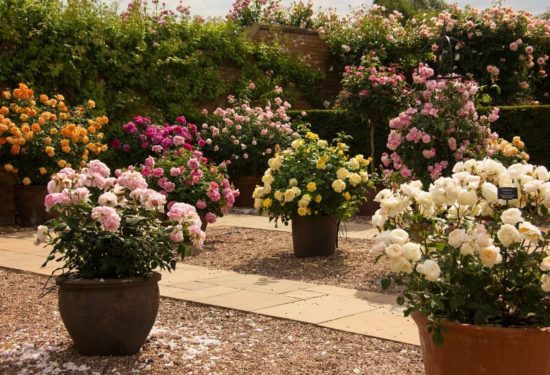
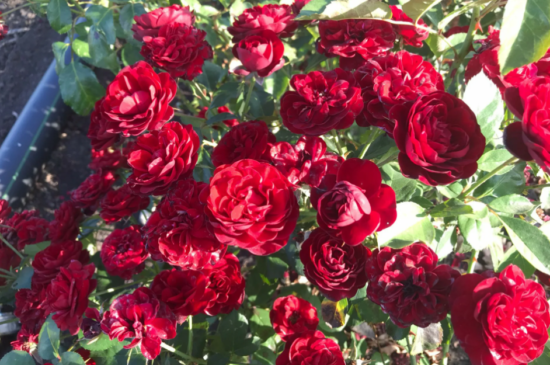

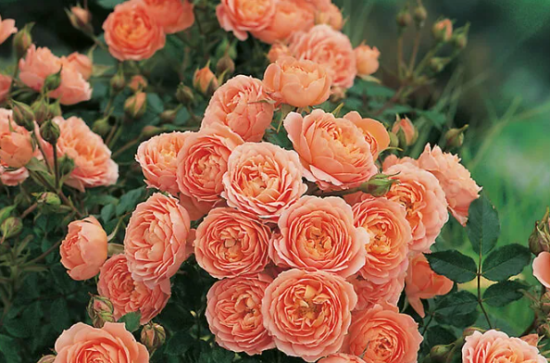
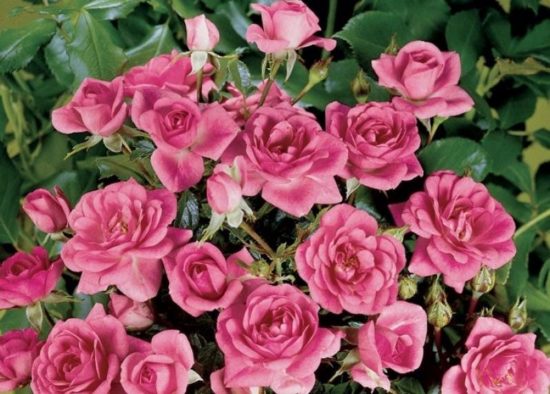
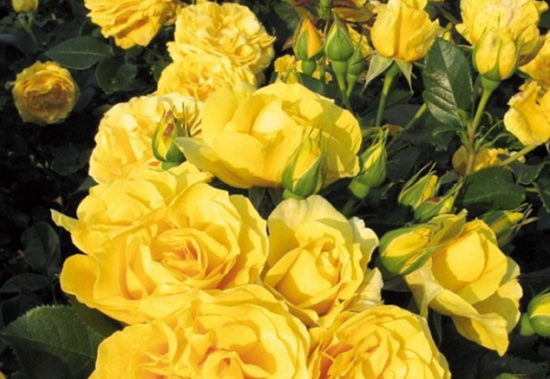
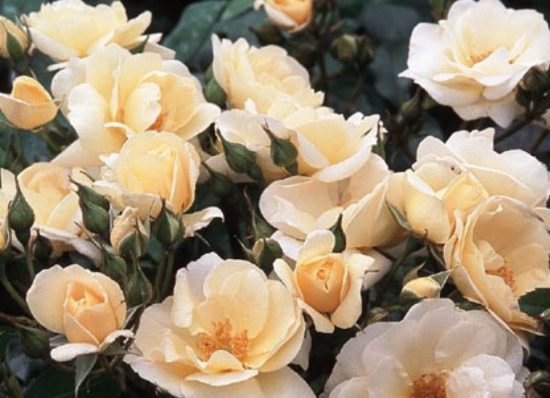
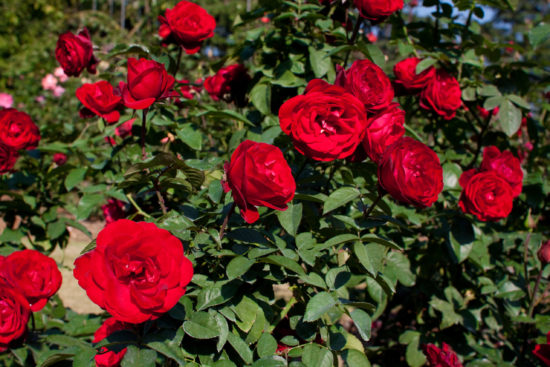
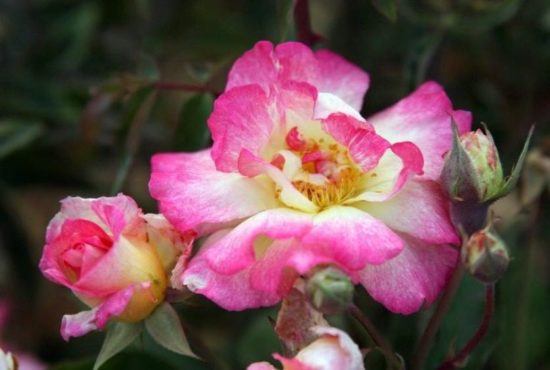
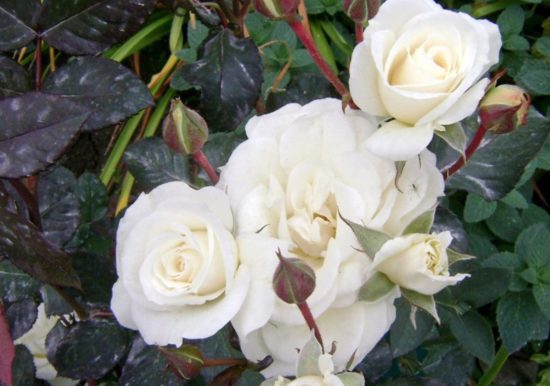

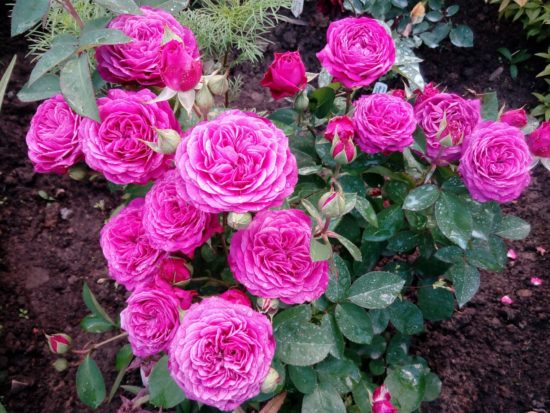
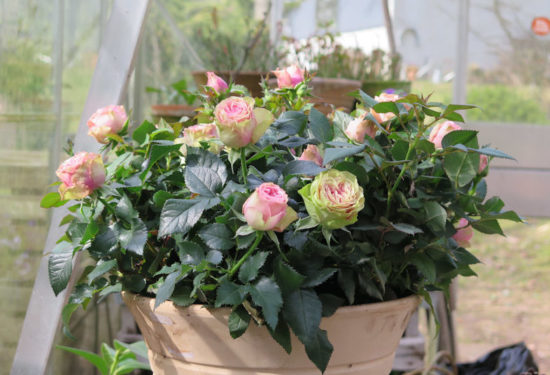
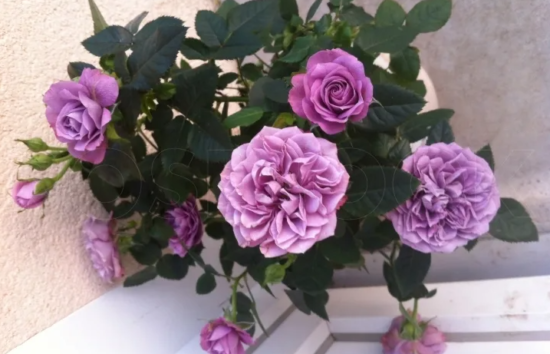

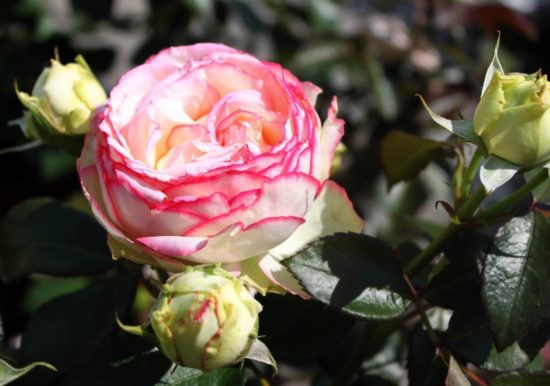
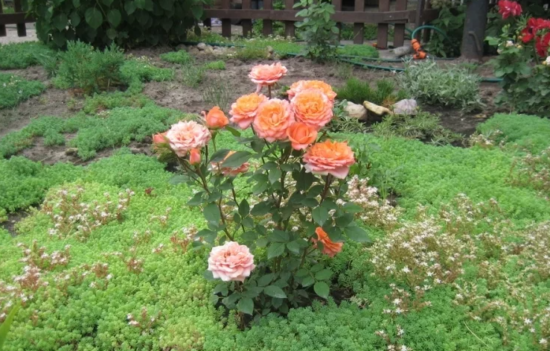


 CUCUMBERS NEVER GET SICK, I'VE BEEN USING ONLY THIS FOR 40 YEARS! I SHARE A SECRET WITH YOU, CUCUMBERS ARE LIKE THE PICTURE!
CUCUMBERS NEVER GET SICK, I'VE BEEN USING ONLY THIS FOR 40 YEARS! I SHARE A SECRET WITH YOU, CUCUMBERS ARE LIKE THE PICTURE! You can dig a bucket of potatoes from each bush. Do you think these are fairy tales? Watch the video
You can dig a bucket of potatoes from each bush. Do you think these are fairy tales? Watch the video
 How our fellow gardeners work in Korea. There is a lot to learn and just fun to watch.
How our fellow gardeners work in Korea. There is a lot to learn and just fun to watch. Eye trainer. The author claims that with daily viewing, vision is restored. They don't charge money for views.
Eye trainer. The author claims that with daily viewing, vision is restored. They don't charge money for views. A 3-ingredient cake recipe in 30 minutes is better than Napoleon. Simple and very tasty.
A 3-ingredient cake recipe in 30 minutes is better than Napoleon. Simple and very tasty. Therapeutic exercises for cervical osteochondrosis. A complete set of exercises.
Therapeutic exercises for cervical osteochondrosis. A complete set of exercises. Which indoor plants match your zodiac sign?
Which indoor plants match your zodiac sign? What about them? Excursion to German dachas.
What about them? Excursion to German dachas.